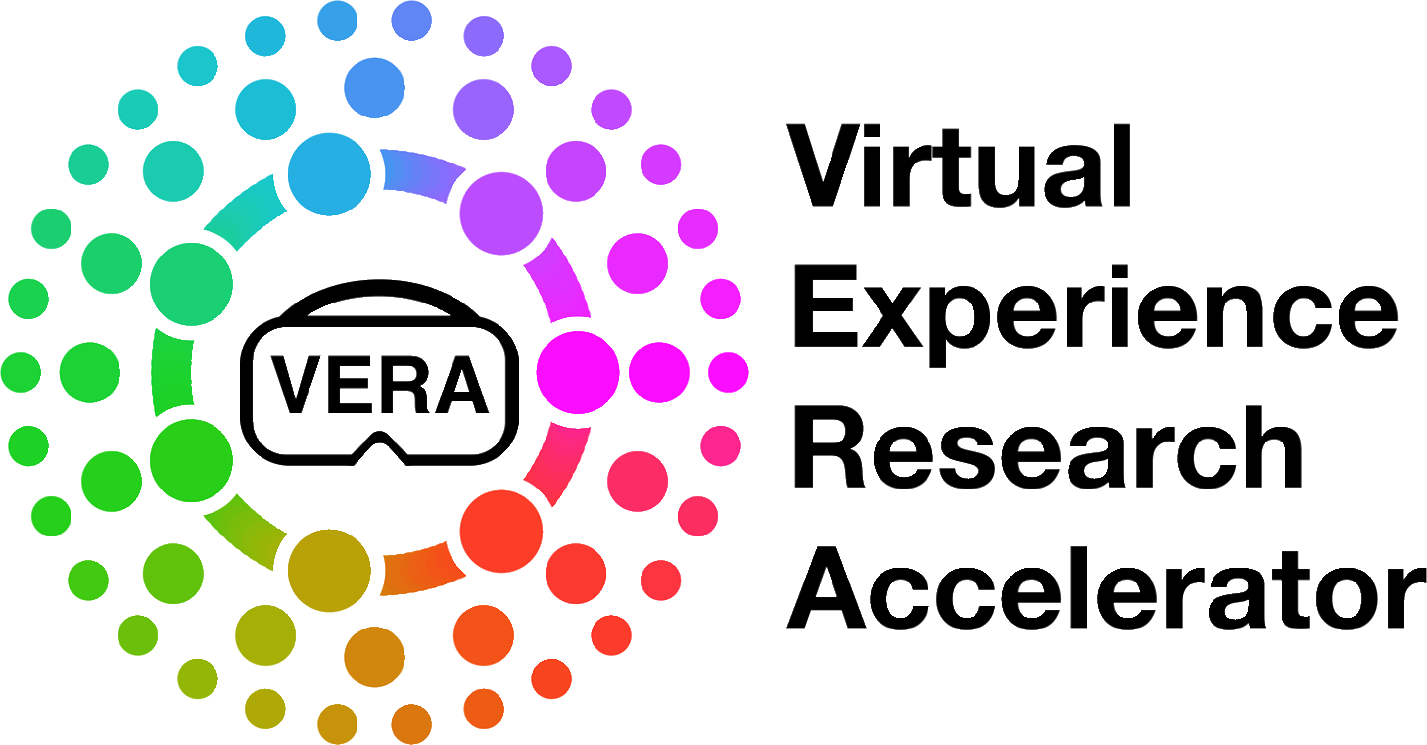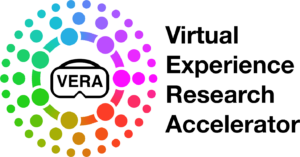ISMAR 2024 Tutorial: Participating in the Testing of VERA
Logistics
October 21, 2024, 1:30-5:30pm PDT
Seattle, Washington
Venue: Hilton Bellevue (ISMAR Conference Hotel)
Room: King County 2
Overview
The Virtual Experience Research Accelerator (VERA) is currently undergoing development, but by ISMAR 2024 we expect to have an early version of the system available for the running of real or realistic user studies, for the purpose of testing the VERA systems and procedures. On 21 OCT 2024 we will conduct an ISMAR 2024 tutorial to introduce attendees to the requirements and procedures for getting involved in such testing, what we expect in terms of tester effort, and what we expect in terms of test system functionality.
At the conclusion of this tutorial attendees will: (1) understand the VERA development timeline and objectives, (2) understand opportunities for early adopter/tester efforts, (3) have experience with a live demo of the current version of VERA with relevant supporting packages and documentation, and (4) gain information on getting approval for VERA use from their university's Institutional Review Board (IRB) or equivalent.

Motivation
When carrying out traditional laboratory-based human subjects research for XR, researchers are inherently constrained to relatively slow data collection with relatively small and demographically narrow “convenience” samples of the population. With VERA, researchers will have the opportunity to push their study out to a standing participant pool and gain human subjects data from a relatively large population, with controlled demographics, in a relatively short time. VERA seeks to provide the XR researcher community with a one-of-a-kind tool that will support more sophisticated, robust, and impactful XR research, benefiting the field of XR and society as a whole.
Testing at early stages will not involve paid participants. When testing does involve paid participants, it is our intent to subsidize some of the participant costs, with priority given to those with demonstrated committed engagement in the testing process. With or without paid participants, we anticipate that the testing will be a net-positive experience for the testers: in exchange for engagement in the testing process they will get early and free or reduced-cost use of VERA for what we expect will be publishable results. They will also be helping to develop a resource that will eventually be available to all XR researchers, i.e. a chance to “do good” for the XR research community. We will publicly express our appreciation to all institutions participating in the testing.
Organizers
Ali HASKINS LISLE, Ph.D.
Director of Development and Operations, VERA
University of Central Florida
ahaskins@ucf.edu
Greg WELCH, Ph.D.
Pegasus Professor and AdventHealth Endowed Chair in Simulation
University of Central Florida
welch@ucf.edu
Presenters
Gerd BRUDER, Ph.D.
Research Associate Professor
University of Central Florida
Ali HASKINS LISLE, Ph.D.
Director of Development & Operations, VERA
University of Central Florida
John MURRAY, Ph.D.
Associate Professor, Games and Interactive Media
University of Central Florida
Associate Professor
Davidson College
Greg WELCH, Ph.D.
Pegasus Professor and AdventHealth Endowed Chair in Simulation
University of Central Florida
Agenda
1. Introduction (15 Minutes) — Dr. Ali Haskins Lisle and Dr. Greg Welch
- Tutorial Information
- Review the scope of the tutorial today.
- Motivation
- Discuss the limitations of traditional lab-based studies in XR research, such as small, homogenous sample sizes and logistical challenges.
- Explain how VERA will address some of these limitations by providing access to a large, diverse participant pool for remote XR experiments.
- Highlight the potential impact of VERA on advancing XR research and fostering innovation in the field.
- Present our vision for VERA.
2. VERA Background (15 Minutes) — Dr. John Murray
- Infrastructure Overview
- Provide an overview of the VERA platform, including its architecture and key components.
- Discuss the technology stack used to build VERA.
- Highlight the capabilities of each component and how they contribute to the overall functionality of VERA.
- Software and Processes
- Discuss phased MVP approach and release schedule.
- Walk through the processes involved in conducting a study using VERA, from study creation to participant recruitment and data collection.
3. Testing VERA (1.5 Hours) — Dr. John Murray
- Example Experiment Working Session
- Demonstrate data collection using VERA with partipants
- Provide a walkthrough of configuring a Unity VR project for VERA, including:
- VERA Unity Plugin
- VERA Virtual Locomotion and Accessibility Toolkit
- Discuss other accessibility implementation potentials
- Goal is to prepare attendees to use VERA for study data collection at multiple phases of the project and to identify roadblocks and features.
10-MINUTE BREAK
4. IRB/Institutional Agreement Info (15 Minutes) — Dr. Ali Haskins Lisle
- Provide guidance on navigating IRB approvals and institutional agreements when using VERA for research.
- Discuss best practices for ensuring compliance with IRB regulations when conducting research using VERA, including data privacy and participant consent.
- Highlight the steps needed to test VERA: researcher roadmap.
5. Participant Discussion (30 Minutes) — Dr. Tabitha Peck
- Discussion about diversifying participants.
- Review and contribute to participant pool development approaches.
6. Special Interest Groups (30 minutes) — Dr. Gerd Bruder
- Special interest groups on future planned studies and
collaboration opportunities discussion.
7. UI Design Review (Time Permitting, 15 Minutes) — Dr. Ali Haskins Lisle
- Provide feedback on features and enhancements that would improve researcher user experience.
8. General Discussion — Dr. Ali Haskins Lisle and Dr. Greg Welch
17 OCT 2024
![]()
This material is based upon work supported primarily by the National Science Foundation under Grant Number 2235066.
Any opinions, findings, and conclusions or recommendations expressed in this material are those of the author(s) and do not necessarily reflect the views of the National Science Foundation.


